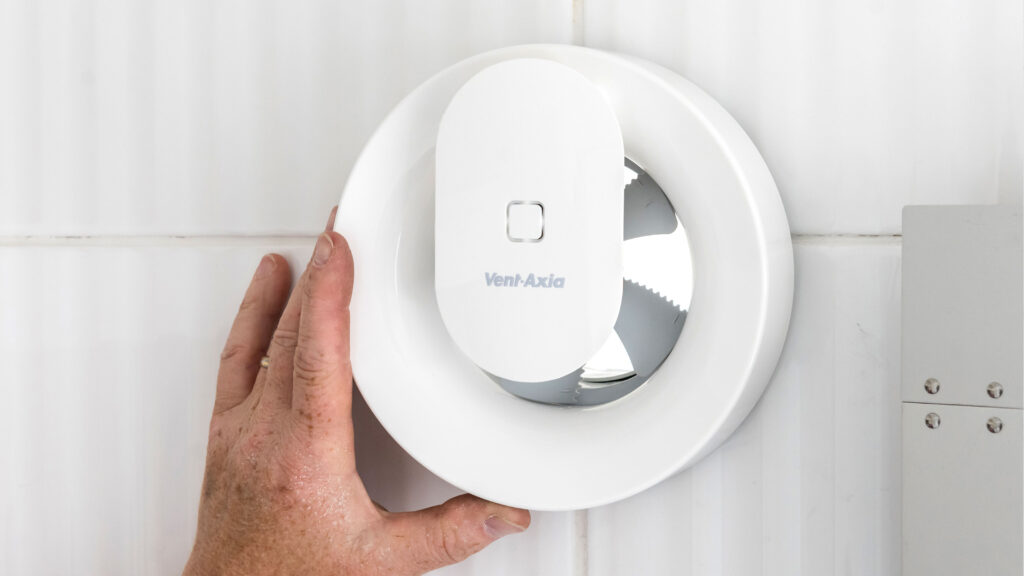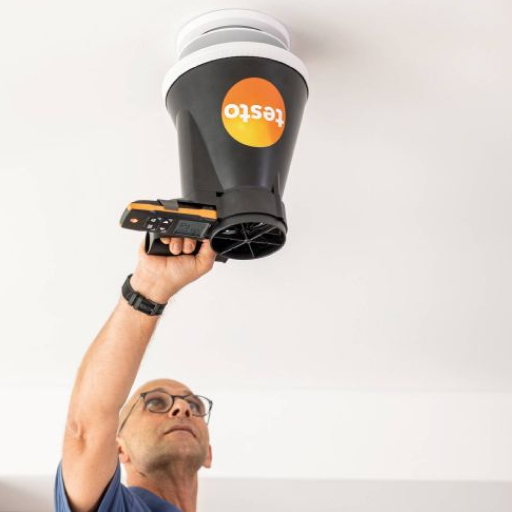It is now a requirement to test all extract fans in new homes – this is achieved with Part F ventilation testing.
Build Energy is well placed to carry out fan testing as part of our post construction works, and it can usually be covered at the same time as your Air Permeability Testing.
 Part F Testing – Why Test?
Part F Testing – Why Test?
We are essentially demonstrating that the fan is performing how it is intended. Extract fans will come with performance figures showing air flow in litres per second. For example a typical bathroom fan would be expected to extract at a rate of 15 litres per second.
In the real world, many fans do not perform to their rating and this is often due to poor ductwork design or installation.
Part F of the Building Regs applies to ventilation requirements, and was last updated in December 2010. In reality we are only recently seeing it’s enforcement and an inconsistent approach from building control bodies, which makes it very difficult to plan for. However we are seeing much higher scrutiny of ventilation systems within new and conversion schemes and even small domestic extensions.
Ventilation designers should adhere to certain good practice and design when specifying ventilation systems. There are 5 different ventilation types, ranging from simple background and intermittent fans, to whole house mechanical extract systems with heat recovery. These are labelled as ‘Systems 1 – 5’.
The testing in this case deals with System 1 fans only – those typical intermittent fans fitted in ceilings and walls which are individually controlled. Part F testing validates air flow measurements for the new dwelling and ensures that the system has been configured correctly.

Portable testing equipment used to test intermittent fans
What is Part F Ventilation Testing?
The methods and procedures for measuring air flows are set out in the Domestic Ventilation Compliance Guide (DVCG) and this sets out several ways to demonstrate compliance.
The rules state that all fixed fans should be tested, and evidence supplied to Building Control within 5 days. In the main we will be testing ‘System 1’ background ventilation systems – the type most commonly seen and consisting of intermittent extract fans and other background ventilation, like trickle vents.
Other systems, like whole house mechanical ventilation (‘MV’ or ‘MVHR’ systems) will usually be commissioned and tested by the qualified installer.
Testing should be carried out using UKAS calibrated equipment.
Minimum air flow by use (litres per second):
Kitchen Adjacent to hob 30 l/s
Elsewhere 60 l/s
Utility 30 l/s
Bathroom 15 l/s
Sanitary Accomodation 6 l/s
The most common method for fan testing is the use of a vane anemometer, which is a measuring device held up to the fan terminal with an appropriate hood attachment. The results of each fan test are evidenced in a report produced by the tester.
If the measured air flow of a fan does not meet the design flow intended, then the test is marked a fail and a retest will be needed.
We highly recommend reading our Part F Ventilation Testing Blog before installing any extract fans if possible, and in preparation for your tests.
How can we help?
- Discounts when combined with air permeability testing
- Full UK coverage
- Vastly experienced team of qualified engineers
- UKAS calibrated equipment
- Practical advice prior to the test to
- Discounts for volume scheme
Would you like to discuss your project?
Call us on 0330 553405 or email be@buildenergy.co.uk.
